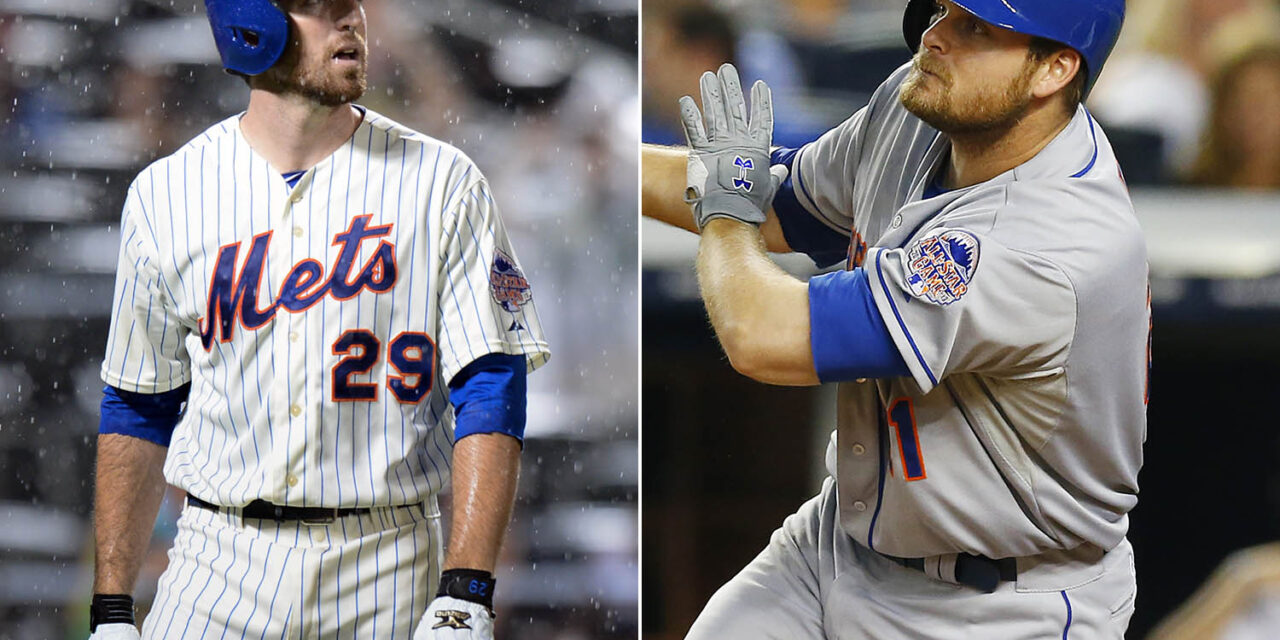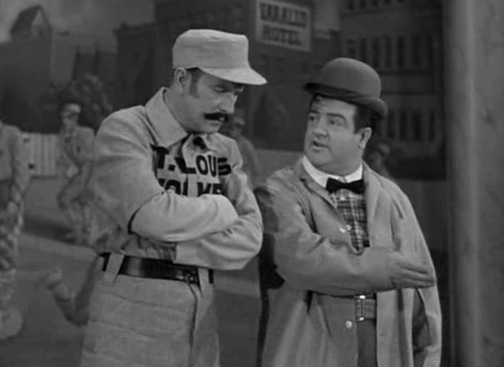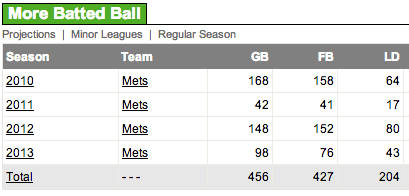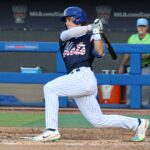Who’s on first?
Rewind to about a month ago — The Mets seemed fully prepared to head into the 2014 with Lucas Duda at first base, and possibly a platoon situation where Josh Satin would be in the lineup against left-handed pitchers. Ike Davis was on the trading block, and the Mets weren’t actually keeping it a secret.
Here we are, about a week away from the official start of spring training, and it seems as if we are going to have an old-fashioned slober knocker to see who the starting first baseman for the Mets will be in 2014.
Mets fans will be divided…get the popcorn ready and enjoy the show.
It’s really anyone’s guess who will be starting at first base. Duda seems to have the inside edge because the Mets already seemed committed to making him the first baseman, but Davis’ power potential may be enough to earn him the job. If Davis gets off to a slow start, Duda may win the job by default. If Davis gets off to a hot start, I’m still not convinced that the Mets won’t use that success to try and get a buyer in the trade market for him.
Only time will tell, but let’s take a look at Duda’s and Davis’ performance at the plate the past couple of years to see if anyone has an inside edge.
Duda’s Pitch Types
 In 2011, Duda saw the highest percentage of fastballs that he has seen over the past three years. As you can see from the graphic, his fastball percentage (FA%) has dropped off by about four percent, while the amount of curveball (CU%) and sliders (SL%) he has seen has increased.
In 2011, Duda saw the highest percentage of fastballs that he has seen over the past three years. As you can see from the graphic, his fastball percentage (FA%) has dropped off by about four percent, while the amount of curveball (CU%) and sliders (SL%) he has seen has increased.
This is not uncommon. As scouting reports start circulating about hitters, the pitchers will adjust the way they pitch to certain hitters. A major increase came with the amount of curveballs that Duda is now seeing with compared to his 2011 season. Once the pitchers start changing the way they pitch to the hitter, the hitter has to also adjust. These adjustments will ultimately determine success of a player at the major league level.
Duda’s Aggressiveness
 For those who are upset with Duda’s approach, and his lack of aggressiveness at the plate, you’re right. Not only is Duda swinging a pitches out of the zone at a lower rate (O-Swing%), but he is also swinging at pitches in the strike zone at a lower rate (Z-Swing%). While it’s impressive to see him laying off pitches out of the strike zone, it’s disappointing to see that he is letting strikes go by, which has become somewhat of a pet peeve amongst Mets fans.
For those who are upset with Duda’s approach, and his lack of aggressiveness at the plate, you’re right. Not only is Duda swinging a pitches out of the zone at a lower rate (O-Swing%), but he is also swinging at pitches in the strike zone at a lower rate (Z-Swing%). While it’s impressive to see him laying off pitches out of the strike zone, it’s disappointing to see that he is letting strikes go by, which has become somewhat of a pet peeve amongst Mets fans.
Another alarming stat is that his contact rate has dropped dramatically—by nearly ten percentage points. He was making contact with 90.1% of the pitches thrown in the strike zone in 2011 when he compiled a .292 batting average, and only 80.6% in 2013 where his batting average was .223.
Putting It All Together
After looking at both of the charts above, it’s easy to see what is going on with Duda. All of the information is tied together. Duda is, in fact, less aggressive at the plate. He is swinging less because he is seeing fewer fastballs. He is also making less contact with pitches in the strike-zone because he is seeing more off-speed pitches. Rather than adjusting, he is opting to wait for fastballs, and he is getting himself deep into counts. When he’s deep in the count, he is forced to swing at the off-speed pitches which causes more swings and misses than in 2011 (lower overall contact percentage).
This combination drives up his strike out rate, and decreases his batting average and the amount of damage he can ultimately do with the bat. While Duda’s walk rate has increased, that increase means nothing if it comes with a decrease in almost every other offensive category. What would be impressive is seeing his walk rate increase, while he also improved his other statistics.
When Duda makes contact, and puts the ball in play, good things happen. For how low his batting average was in 2013, his BABIP was .276—in 2011, it was .326. But for Duda to regain his 2011 form, he will have to adjust his hitting approach. The pitchers have adjusted to him, and rather than adjust, Duda seems to be going ahead with the same approach which is crippling him offensively.
I’m reminded of this quote from CBS.com back in 2012, and wondering if Duda has progressed at all since then:
What Collins does know without a doubt is that Duda isn’t the same timid hitter that originally arrived in the clubhouse last year.
“He now believes in himself,” Collins said. “Where he came up with some doubts last summer, in the beginning he talked about it and vocalized it: `I’m not sure I belong here.’ Well I just think now he believes he belongs here.”
We can break baseball down to it’s simplest form and what you have is Darwinism—like animals striving for survival in the wild, players have to adapt or die. Some of them will do whatever it takes to survive, which is evident from them opting to use Performance Enhancing Drugs. While I’m not saying Duda should use PEDs, he does have to adapt.
If Duda can adapt, he could be the one standing victorious in this game of Survivor to see who is on first base for the Mets in 2014.
Davis’ Pitch Types
 Davis’ best season as a major leaguer came in 2012, when he hit 32 homeruns and had 90 RBI. The power was there, but he didn’t hit for high average and his walk rate was the lowest it has been in his professional career. The odd thing is, the pitch types Davis saw between 2012 and 2013 didn’t change much. The major change seemed to be the amount of fastballs he saw increased, while the amount of curveballs decreased. Pitchers threw Davis more fastballs in 2013. Why wouldn’t they after looking at his swing? With all those moving parts, Davis became highly vulnerable to the fastball in 2013.
Davis’ best season as a major leaguer came in 2012, when he hit 32 homeruns and had 90 RBI. The power was there, but he didn’t hit for high average and his walk rate was the lowest it has been in his professional career. The odd thing is, the pitch types Davis saw between 2012 and 2013 didn’t change much. The major change seemed to be the amount of fastballs he saw increased, while the amount of curveballs decreased. Pitchers threw Davis more fastballs in 2013. Why wouldn’t they after looking at his swing? With all those moving parts, Davis became highly vulnerable to the fastball in 2013.
Davis’ Aggressiveness
By taking a look at the graphic above, there isn’t much that would make us think that Davis should have had a major drop-off in production from 2012 to 2013. In fact, there is evidence here that should suggest the opposite. Davis reduced the amount of pitches he swung at outside the strike zone in 2013 (O-Swing%). Davis made the same amount of contact in 2013 as he did in 2013 (74.7%). Davis’ walk rate increased in 2013, which correlates with him swinging at pitches out of the strike zone less, but what can explain the drop off in performance?
The answer is in the types of swings he is taking which are changing the type of contact he is making. Check out this graphic below:
In 2012, Davis hit the ball in the air much more than any other season. He hit 152 fly balls and 80 line drives. I didn’t show his infield fly balls, but in total, he hit the ball in the air a total of 250 times, 32 of which were homeruns. That means 12.8% of his balls hit in the air were dingers in 2012. In 2013, he hit the ball in the air 129 times and nine of those went for homeruns. His homerun percentage on balls hit in the air dropped to 7% in 2013.
Putting It All Together
While Davis made the same amount of contact in 2013 as he did in 2012, it was less authoritative. He also hit a higher percentage of ground balls in 2013, more than any other season. This is all due to mechanical flaws in his swing. He isn’t getting around on the fastballs, which was the pitch of choice for pitchers when facing Davis in 2013. By over-compensating for the fastball, he becomes more susceptible to the off-speed pitches, and he will make weaker contact as he takes defensive swings off his back foot. A more simplified swing could make Davis a lethal power hitter again.
Davis did a better job with plate discipline in 2013, as he swung at pitches out of the strike zone less often in 2013 which directly impacted his walk rate and on base percentage. His issue is with his swing. By limiting what he is doing before the pitch arrives, he will be able to trust his hands more and adjust to whatever pitch he sees. By keeping his hands between his shoulder and ear, he already has them in a good hitting position, and doesn’t have to make three movements before the pitch arrives to get them there. Simplify, simplify, simplify.
If Davis spent the winter working on his swing, there is no doubt in my mind that he will be a 30-plus homerun hitter again, and the Mets first baseman in 2014.
(Charts from Fangraphs.com)



















